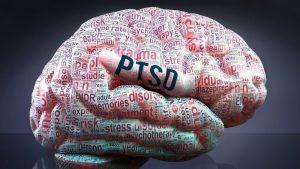Posted on Saturday, January 1st, 2022 at 9:30 pm
 It is natural to feel afraid after you’ve been in a traumatic situation. This may include accidents caused by other people’s negligence, domestic violence, street violence, or even witnessing a traumatic event.
It is natural to feel afraid after you’ve been in a traumatic situation. This may include accidents caused by other people’s negligence, domestic violence, street violence, or even witnessing a traumatic event.
Fear triggers the flight or fight response. This is a reaction that is designed to protect an individual from harm. It immediately raises several hormone levels to give you the strength to either fight or flee.
This response is triggered during any traumatic event. People who continue to experience problems after a traumatic event may continue to feel stressed or frightened when there is no danger. This may be post-traumatic stress disorder (PTSD). This disorder can cause significant issues that impact every area of an individual’s life.
What Is PTSD?
PTSD is a psychiatric disorder that is not uncommon in a person who has experienced or witnessed trauma. These events can include natural disasters, rape, or being threatened with violence or death.
PTSD was known as “shell shock” after World War 1 and “combat fatigue” after World War II. However, as has been demonstrated in multiple research studies and attested to by psychologists and therapists, PTSD does not only happen to people who have seen combat.
Approximately 3.5 percent of all U.S. adults are affected by PTSD and an estimated one out of every eleven people will be diagnosed during their lifetime. While it does affect people of any ethnicity, nationality, culture, age, and gender, women are twice as likely to experience PTSD as men.
The condition puts you at risk for other mental health problems. These include depression, alcohol abuse, eating disorders, suicide, and drug addiction. The high levels of chronic stress also place an individual at higher risk for chronic pain and heart disease. An individual who has PTSD will have four main types of symptoms:
Unwanted and recurring memories: These are often called flashbacks and can include vivid nightmares. The memories trigger intense emotional or physical reactions.
Avoidance: Any physical reminder of the events that bring back memories will often be avoided. This can include people, places, and activities.
Changes in feelings and thoughts: An individual with PTSD will experience negative thoughts and feelings. These can include anger, fear, guilt, or a lack of any feeling. Individuals with PTSD often feel cut off from others or begin to believe that they are bad, and the world is unsafe.
Hypervigilance: PTSD can cause an individual to become overly alert. This can lead to sleeping difficulties, lack of concentration, and irritability. Individuals are constantly on the lookout for danger and startle easily.
Individuals with PTSD may also describe an out-of-body experience, which psychologists call a dissociative experience.
The Social Security Administration defines PTSD as a disability if the applicant can meet certain criteria. When symptoms are so severe that you’re unable to work, your condition may qualify you for benefits.
Types of Benefits Available
 There are three types of disability benefits available to an individual who has been diagnosed with PTSD. The benefits typically are administered through one of four places:
There are three types of disability benefits available to an individual who has been diagnosed with PTSD. The benefits typically are administered through one of four places:
Social Security disability insurance: Social Security disability pays a monthly stipend for individuals who meet the eligibility requirements. Requirements include several factors that must be documented and fully supported.
Supplemental Security Income: Social Security Income (SSI) pays benefits to disabled people with limited resources and income.
Veterans Administration disability benefits: Veterans of the military may be eligible for benefits through the Veterans Administration. These benefits are only available to military and ex-military personnel. It requires that the disability was either incurred or worsened during the individual’s time in the armed forces. The benefit received will be determined by the degree of disability.
Private or employer disability insurance: The benefits will vary depending on the policy. Insurance policies may cover short-term or long-term claims. The individual insurance company can define the disability, whether you qualify, and how long you can receive benefits.
How to Document PTSD for Benefits
To receive benefits from one of these entities, it’s important to provide all the medical evidence required for your diagnosis and any other impairment. You are more likely to be successful in your application process when you are represented by an experienced disability insurance attorney.
Your attorney can advise you about evidence gathering to prove your case. Medical evidence should include all records of inpatient or outpatient psychiatric treatment, counseling, and therapy. Your healthcare provider may be asked to complete specific forms or write a letter of medical necessity that can increase your chance of approval. Information that may be requested include questions about your ability to:
- Maintain attention and concentration
- Make simple work-related decisions
- Sustain a routine
- Carry out simple and complex instructions
- Interact with others
Letters from friends, family, bosses, and co-workers, can help support your claim and speak to your disability. Their statements should focus on their observations of, and interactions with, you.
Call Capitan Law for Disability Insurance Representation
Our legal team has the experience and skill to help you navigate the process of applying for and gaining disability benefits when you have PTSD. If you believe that you qualify for long term disability benefits, please reach out to the long term disability lawyers of Capitan Law for a free consultation and review of your case. Contact us today at (267) 419-7888 or online to schedule your free appointment.